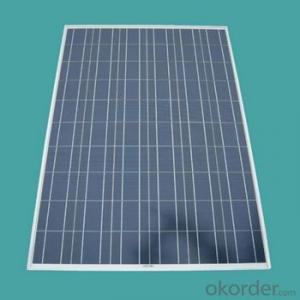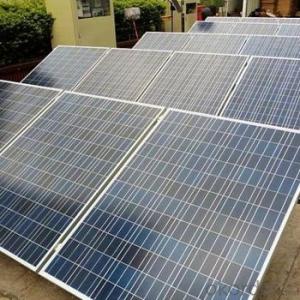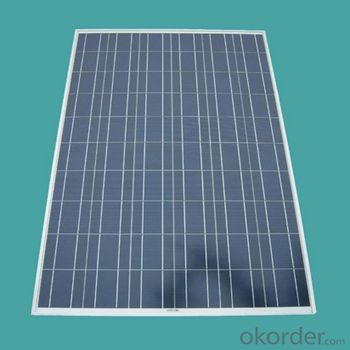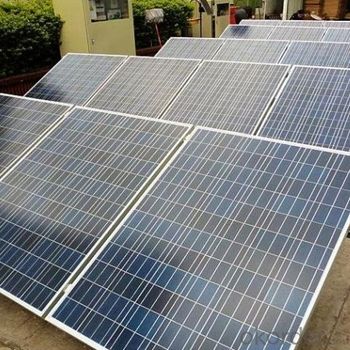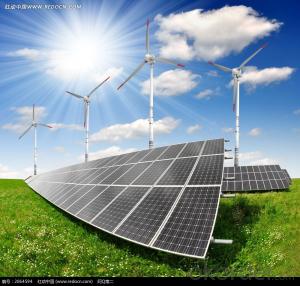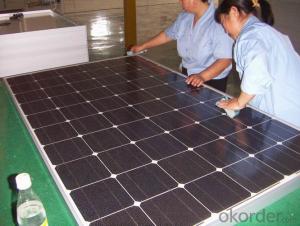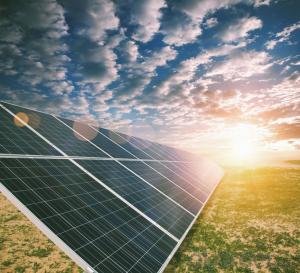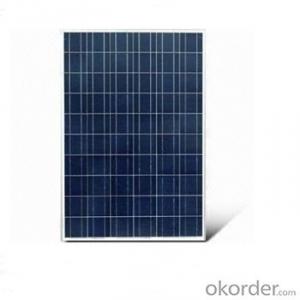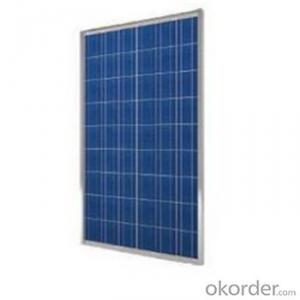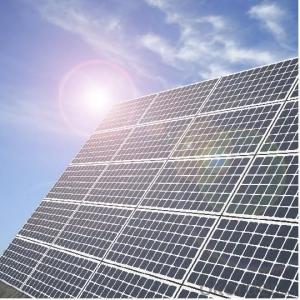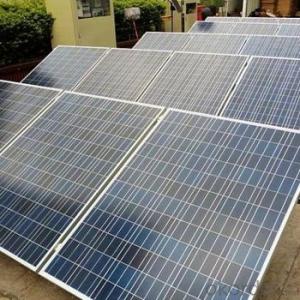Federal Grants Solar Panels:Solar Polycrystalline Panels Max Power 240-W
- Loading Port:
- Shanghai
- Payment Terms:
- TT OR LC
- Min Order Qty:
- 100 pc
- Supply Capability:
- 30000 pc/month
OKorder Service Pledge
OKorder Financial Service
You Might Also Like
Product Description:
Solar Polycrystalline Series
Our designing philosophy is making solar product easy to use and convenient to maintain. We adhere to "develop inverter and controller" as our core technology, and built up solar product from 0.5W to 100KW into standard and mass production, meeting most customers' needs in this field.
Product Name : 240W solar panels
Max Power(W) : 240W-36P
Dimension(mm) : 1960*986*50 (mm)
Weight(kg) : 23.5 (kg)
Max Current(A) : 6.94 (A)
Max Voltage(V) : 36 (V)
Short Circuit Current(A) : 7.78 (A)
Open Circuit Voltage(V) : 43.2 (V)
Number of Cell (PCS) : 6*12 (PCS)
Contrast with other model solar panels
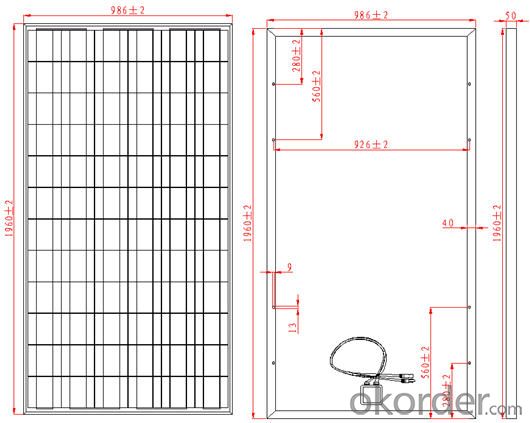
ITEM NO. | ESC280W-36P | ESC270W-36P | ESC250W-36P |
Maximum Power (W) | 280 | 270 | 250 |
Optimum Power Voltage (V mp) | 35.14 | 35.14 | 35.14 |
Optimum Operating Current (I mp): | 7.97 | 7.69 | 7.12 |
Open Circuit Voltage (Voc) | 43.2 | 43.2 | 43.2 |
Short Circuit Current (ISC) | 8.53 | 8.21 | 7.6 |
Cell Efficiency (%) | 16.00% | 15.40% | 14.27% |
Module Efficiency (%) | 14.49% | 13.97% | 12.94% |
FF (%) | 70-76% | ||
Warranty | 90% of 10 years, 80% of 25 years. | ||
Standard Test Conditions | AM1.5 1000W/m225 +/-2ºC | ||
Bypass Diode Rating (A) | 12 | ||
Cable & Connector Type | Pass the TUV Certificate | ||
Brand Name of Solar Cells | ----Cell | ||
Size of Module (mm) | 1960*986*50 | ||
Solar Cell | 156*156Poly | ||
Backing (Material) | TPT | ||
Frame (Material Corners, etc.) | Aluminum-alloy | ||
Number of Cell (PCS) | 6*12 | ||
N/W(KG) | 20.96 | ||
Junction Box Type | Pass the TUV Certificate | ||
Tolerance Wattage (e.g. + /-5%) | +3% | ||
Front Glass Thickness (mm) | 3.2 | ||
Surface Maximum Load Capacity | 2400Pa | ||
Allowable Hail Load | 23m/s, 7.53g | ||
Packing | 1*20' | 226pcs | |
1*40'STD | 460pcs | ||
Temperature Coefficients of ISC(%)ºC: | 0.04 | ||
Temperature Coefficients of Voc(%)ºC: | -0.38 | ||
Temperature Coefficients of Pm(%)ºC: | -0.47 | ||
Temperature Coefficients of IM(%)ºC: | 0.04 | ||
Temperature Coefficients of VM(%)ºC: | -0.38 | ||
Temperature Range | -40ºC to +85 | ||

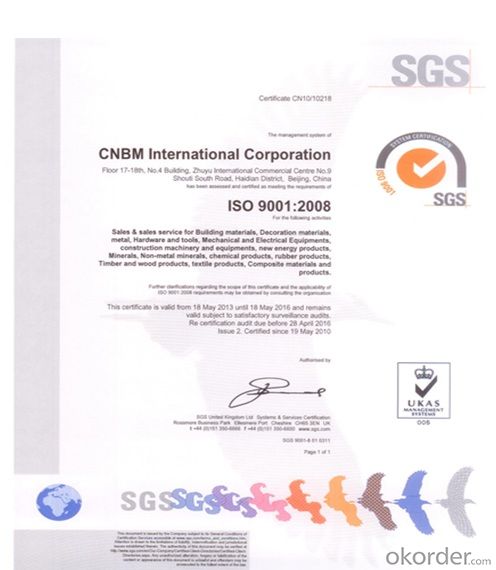

FAQ
We have organized several common questions for our clients,may help you sincerely:
①What price for each watt?
It depends on the quantity, delivery date and payment terms,
②What is your size for each module? Can you tell me the Parameter of your module?
We have different series of panels in different output, both c-Si and a-Si. Please take the specification sheet for your reference.
③Can you provide the peripheral products of the solar panels, such as the battery, controller, and inverter? If so, can you tell me how do they match each other?
Yes, we can, we have two companies for solar region, one is CNBM International, the other is CNBM engineering Co.
We can provide you not only the solar module but also the off grid solar system, we can also provide you service with on grid plant.
④What is your warranty system?
Our product performance guarantees for 25 years
• 12 years guarantee for workmanship
• Timeliness of delivery
• Quality Products certified (TÜV, UL, CE, ISO)
⑤How do you pack your products?
We have rich experience on how to pack the panels to make sure the safety on shipment when it arrives at the destination.
⑥ Can you do OEM for us?
Yes, we can.
⑦How long can we receive the product after purchase?
In the purchase of product within three working days, We will arrange the factory delivery as soon as possible. The pecific time of receiving is related to the state and position of customers.Commonly 7 to 10 working days can be served.
- Q: Can solar panels be used for charging outdoor power tools?
- Yes, solar panels can be used for charging outdoor power tools. They can harness sunlight and convert it into electricity, which can then be used to charge the batteries of outdoor power tools. This allows for a sustainable and convenient way to power these tools without relying on traditional electricity sources.
- Q: my solar car works when using the Battery but when there is sunlight i connect the wires to the solar panel and it does not work...................HELP
- leave the car in the sun for a few hours to see if it charges. if not, the panel is defective. get it replaced b4 the science fair
- Q: How much solar energy does a 2m by a 3m solar panel convert to energy on a sunny day? Assume that the solar cells are 30% efficient.I'm not looking for the answer so much as I need an explanation o how to solve this type of problem... Thanks!!
- A watt is the fee at which vigour is produced. It's analogous with horsepower, hp = 745W= 33,000 toes-lbs per minute. So the wattage of a sunlight panel is the capacity of the panel to drive a procedure like run a motor or power a radio. General energy calculations are a part of the bigger class of Physics.
- Q: Do solar panels require direct sunlight to generate electricity?
- Yes, solar panels do require direct sunlight to generate electricity. While they can still produce some electricity in indirect or diffused sunlight, their efficiency significantly decreases without direct sunlight. Direct sunlight provides the optimal conditions for solar panels to convert sunlight into electricity effectively.
- Q: i want to join multiple solar panels into a bank so i only need one length of wire, i am going to use diodes to stop them sending power back into the one before it. is this ok or do i need something else?
- Maybe. It depends on the panels involved, and what their output is. Not all panels are able to be daisy chained.
- Q: Do solar panels require a specific type of mounting system for installation?
- Yes, solar panels require a specific type of mounting system for installation. The mounting system must be designed to securely hold the panels in place, ensure optimal sun exposure, and withstand various weather conditions.
- Q: How do solar panels affect the environment?
- Solar panels have a positive impact on the environment as they produce clean, renewable energy without emitting harmful greenhouse gases. They help reduce air pollution, combat climate change, and conserve natural resources by decreasing our reliance on fossil fuels. Additionally, solar panels have a minimal environmental footprint during their operation and can be recycled at the end of their lifespan, making them a sustainable energy choice.
- Q: Can solar panels be installed on a building with historical significance?
- Yes, solar panels can be installed on a building with historical significance. However, it is important to consider the potential impact on the building's aesthetics and historical value. Careful planning and consultation with preservation experts can help ensure that the installation is done in a way that minimizes any negative visual or structural impact on the building while still harnessing the benefits of solar energy.
- Q: Just curious.
- Since you said does instead of do I think it would be fruitless trying to explain it...
- Q: With no moving parts, no fuel piping and so on...
- The only way I know of is to invest the money in the stock market. Most savings accounts only pay 3% intrest. While stocks float and if you don't know what you are doing you will never make as much money as you could save on your electric bill. Then the fact that you have to pay the electric bill out of the money. In the end you rented electric and can never get your money back. You can always sell the solar electric system and get your money back plus a profit. Not many people live in the same house even 20 years so it will sell. Toss the coin. It is what ever is best for you.
Send your message to us
Federal Grants Solar Panels:Solar Polycrystalline Panels Max Power 240-W
- Loading Port:
- Shanghai
- Payment Terms:
- TT OR LC
- Min Order Qty:
- 100 pc
- Supply Capability:
- 30000 pc/month
OKorder Service Pledge
OKorder Financial Service
Similar products
Hot products
Hot Searches
Related keywords
